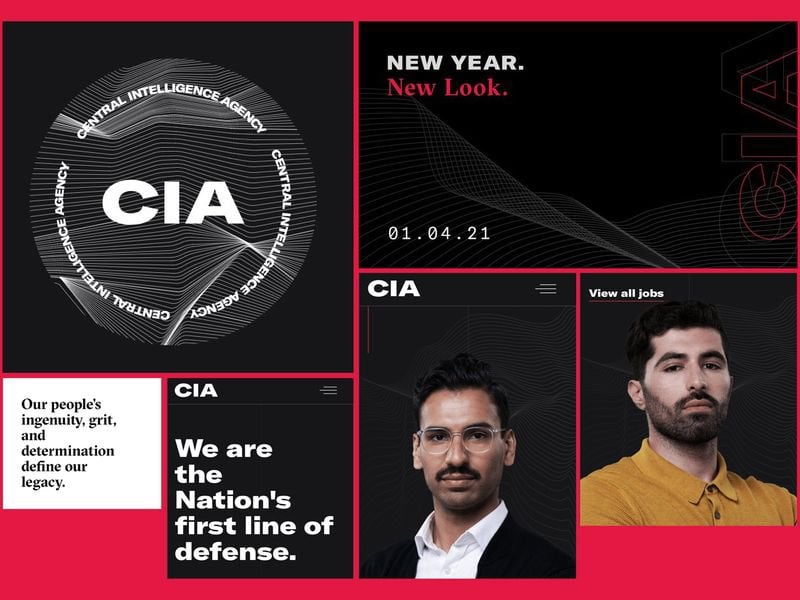
The CIA unveiled a newly updated logo and website this week: a sleek, video game-like rebrand, replete with undulating lines and sans serif font, aimed at attracting a more diverse set of job applicants.
By now, you’ve probably seen it parodied online. Instagram and Twitter users were quick to fire up the hot-takery mill, conjuring comparisons to other trendy design schemas, including Joy Division’s classic Unknown Pleasures album cover and an Urban Outfitters popup shop.
You may have also notice an artist’s name connected to it: Ryder Ripps, a firebrand known as much for his creative collaborations with Grimes and Kanye West as he is for his own quasi-conceptualist—and often controversial—art practice.
Shortly after the CIA design went viral, Ripps took credit for the effort by adding the logo to his Instagram portfolio. And the internet went off: Activists castigated the artist for working with the CIA, while designers dunked on the logo’s technocratic, accelerationist aesthetic.
But did Ripps really design the rebrand? No, it turns out.
A representative from the CIA told Artnet News that Ripps’s involvement in the project was a “false claim,” saying, “this individual had absolutely nothing to do with our website redesign.”
Indeed, Ripps owned up to the troll job himself, calling it a misunderstood joke. “Social online platforms are games that are played within the attention economy,” he told Artnet in an email. “Authorship and sincerity are murky as is. Before I put it in my portfolio, people on Twitter were already asserting that I had made the CIA’s rebranding, why not take their fantasy further and say I made it?”
You can’t fault those who fell for Ripps’s ruse. Sure, it’s hard to imagine the government commissioning an artist known for paying sex workers to make his art, but, then again, Ripps does have a number of major corporate clients under his belt, including Soylent and PornHub. (In that Richard Prince-ian way, the only thing predictable about Ripps is his unpredictability; everything is a joke, even if those jokes are rarely funny.)
The new visual identity is the latest step in the CIA’s effort to diversify and modernize its image under the leadership of Gina Haspel, who became the spy agency’s first female director in 2018. Available through the new website are sections on working at the CIA, job postings, and a simplified application process.
In an interview with the Associated Press, Haspel said she hopes the new website gives potential applicants a window into the “dynamic environment that awaits them here.”
His recent stunt aside, Ripps says he’s not a fan: “I don’t understand why people who hate the CIA are upset about the branding anyways,” he said. “It’s absolutely terrible. Would they rather it be good? lol.”